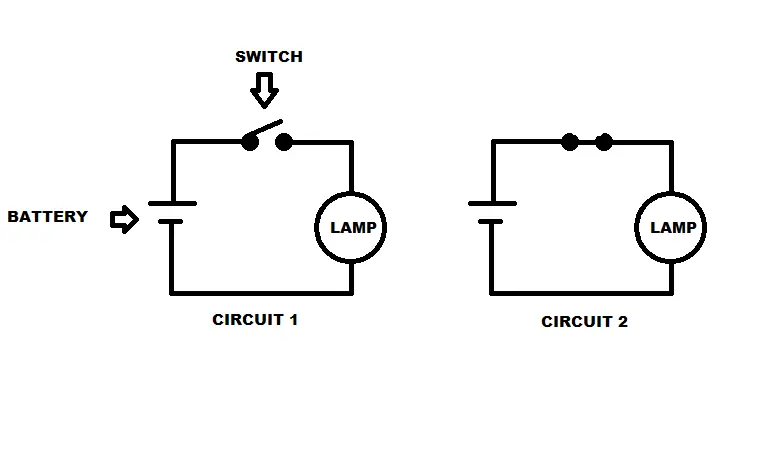You might have experienced electronics turning on by themselves, or you might be curious to know if it is possible.
Can electronic devices magically turn themselves on?
The answer depends on the type of electronic device and how it is turned on. Most electronic devices nowadays have Microchips embedded in them which control all operations.
Electronics circuits that contain Microchips or any other Integrated Circuits have certain states like Standby, or sleep to conserve power and can switch states (appearing to turn themselves on) after a certain amount of time using their inbuilt timers.
The older more conventional circuits that do not have Microchips, but used passive components like resistors, capacitors cannot enter these modes, and therefore cannot turn themselves on.
I will cover in more detail below the basics of the different types of circuit and if it is possible for them to turn themselves on.
Basics of electronic circuits
All electronic devices, no matter how complex, require electricity (flow of electrons) to operate.
This electricity can be provided through the mains outlet in your home, or batteries.
A simple circuit is shown below, that has a source of electricity (in this case a battery), a switch and an Lamp.

Circuit 1 has the switch open, therefore the circuit is not completed and the flow of electrons has no path from the battery to the Lamp. The circuit is in the ‘OFF’ state.
Circuit 2 has the switch closed. Now the circuit is completed and the electrons have a path from the batteries to the Lamp. The circuit is now completed and in the ‘ON’ state.
This is quite a simple circuit, but this is the fundamental principle of how electronics work.
If there is a break in the path of the circuit, there is no flow of electrons and therefore the device won’t be able to function how it normally does.
Every electronic device from your mobile phone to dishwasher has a switch or button that breaks the path of the circuit (preventing the flow of electrons), or closes it (allowing the flow of electrons).
States
The state an electronic device is in, depends on the physical state of the circuit as we covered above.
The two most common states are ‘OFF’ and ‘ON’.
These two states are common with devices that do have integrated chips (like a microcontroller).
A simple Lamp with just a light bulb, switch and power supply has the ability of just being off and on.
However, Microchips have the ability to enter certain other states to conserve power.
These modes include, Sleep, Standby, Idle, and Power-Down.
You might have this when you do not use your computer or laptop for a certain amount of time, it will go to ‘sleep’ to conserve power.
I shall cover details of different states below.
Different types of electronic circuits
As I mentioned above, electronic circuits vary in complexity.
We can class them into two categories for the sake of this article.
An electronic circuit with and without integrated circuits.
Electronics without Integrated Circuits
In general, electronics without integrated circuits contain only two basic states.
They are either ‘ON’ or ‘OFF’, as we saw above with the example of the lamp.
So, can these types of electronics turn themselves on?
The only way these kinds of circuits can turn themselves on is through physically switching them on by pressing a switch or button, that will close their circuits.
The way these types of circuits can turn on by themselves are through external factors.
Possible cases where they could potentially turn on by themselves;
- The switch/button has not been opened fully and is sitting in a neutral position (essentially turning the circuit off), which could then close itself therefore turning the electronic device on.
- Someone accidentally bumps into the switch without knowing causing the electronics to turn on.
Electronics with Integrated Circuits
Over the past couple of decades, innovation in electronics has seen the rise in Integrated circuits like a Microchip.
Microchips are essentially computers embedded onto integrated circuit chips. They are the brains of many embedded systems like televisions, dishwashers, mobile phones etc.
Circuits that have microchips have the ability to enter other states other than just ON or OFF.
These states include Standby, Sleep, Idle and Power-Down.
These states allow the electronic devices to conserve power. I shall refer to them as the Standby state.
They use less functions and may appear to look as though they are turned OFF.
Can electronics turn on by themselves?
Factors that can cause an electronic to switch states
There are certain factors that can cause the electronics devices to come out of the Standby state and enter the ON state which can appear as if the electronics are turning themselves on.
Timers
Microchips have in-built timers which are an essential part in embedded systems.
They maintain timings of operations allowing electronic devices to switch states after a predetermined amount of time.
An example of this is an Air Conditioning unit that has the ability to turn on at a specific time.
Timers start counting and when that specific time is reached, the Air Conditioning unit will turn on.
So, if you happen to have an electronic device that turns on by itself, make sure it does not have a timer set to turn it on at a particular time.
Noise
Electrical noise is an electrical signal that is an unwanted disturbance in a circuit.
This can give the microchip false readings causing it to perform operations it shouldn’t be (like turning itself on).
The causes of noise can range from the Air, power supply, switching regulators, resistors etc.
Sensors
Sensors are common inputs in many electronic devices.
They enable the embedded system to ‘sense’ the physical world from things like temperature, light, colour and many more allowing the embedded system to perform operations based on changes in the external world.
Maybe an electronic device is in Standby mode and depending on certain sensor parameters switches states turning itself on.
Also, many electronic devices can turn on using a remote by means of an Infrared Transmitter and Receiver (televisions being the most common).
The receiver has the potential of being falsely triggered from a source other than that of the television remote.
Ways of preventing electronics from turning on by themselves
While electronic devices have the ability to switch states (depending on certain factors) and appear as if they are turning themselves on, there are ways of preventing this.
If it is a common occurrence it can be quite annoying.
To ensure a device won’t switch states, or ‘turn on’ by themselves you can do a couple things.
Disconnect the power
As we saw earlier, a circuit functions only when power is provided to it.
If it has no means of getting power it won’t be able to turn itself on.
Here’s what you can do to disconnect the power:
- For devices connected to the mains outlet, turn off the switch at the mains. If it does not have a switch, remove the devices power plug
- For portable electronic devices that run on batteries, remove the batteries
Cover Sensors
For devices that can turn on using remotes, they have the potential of turning on from other external signals.
So, you could cover the receiver with a piece of tape when not being used.
This way other signals cannot interfere.
Can electronics turn on by themselves?





